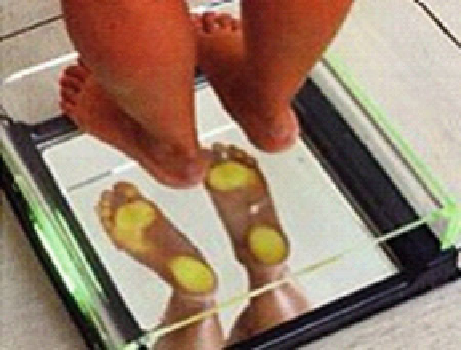Biomedical Engineering Reference
In-Depth Information
Fig. 2
An example of a
pedobarograph system
It is interesting to follow the evolution suffered with plantar pressure measure-
ment techniques. According to J. Stott et al
.
, one of the first registered attempts
consisted on printing the foot depression in a cast mould. With this technique,
the information provided was obviously static and related to the foot profile. The
pressures were determined by the depth of the printed foot profile [
40
]. Since then,
several approaches have been developed and systems with different operational
principles have been implemented. The podoscope is, what we could considered,
a previous and simplified version of the plantar pressures platform, since it provided
a qualitative and comparative measure of the pressure distribution in the plantar
surface static images projected on a mirror. This technique also evolved, and at
present, the dynamic al version of these systems is called pedobarograph (Fig.
2
),
since being instrumented with load cells, measurement of observed pressures is
possible.
A different optical technique proposed by Hughes et al. used optical interfer-
ometry by developing a platform composed by a PMMA layer (due to its optical
transparency and being a slightly deformable material as a result of applied forces)
together with a CCD camera to determine the changes in the interference pattern due
to the applied plantar pressure [
22
]. As stated by the authors, this system presents
a good resolution of 70 pixels/cm
2
, when compared to novel
®
system having 4
sensors/cm
2
.
A different approach developed by Zhu et al
.
[
49
] uses Force Sensitive Resistors,
FSR's as the key element to measure pressure in seven foot areas, chosen previously
as those showing higher vertical loads.
Another approach consisted on developing a micro-transducer based on a
piezoelectric thin film of PVDF (polivinilidene fluoride) with dimensions from
25
m
2
to
4cm
2
. This micro-transducer could be used as the sensing element in
the fabrication of force or pressure platforms [
17
,
50
].

